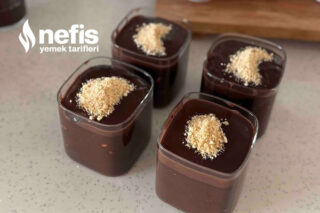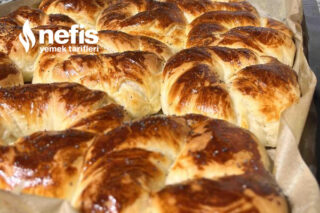Berry Jam with the Makers of Ball® Home Canning Products
This flexible recipe for Berry Jam is made with just fruit and sugar. Keep it on hand for any time you have a glut of sweet, summer berries. A single batch fills three pint sized Ball® Nesting Jars perfectly.

I am an ambassador Ball® home canning products.
According to my very informal polling (I asked my Facebook friends), berry jams are among the most highly valued of all the sweet, summer preserves. And I understand why. Flavorful and visually beautiful, they can be used on toast, as a filling in a cake (or as a topping for one!), swirled into yogurt, or as part of an after dinner cheese board. A sealed jar is also the perfect thank you gift for a teacher, neighbor, or gracious hostess.

I recently did a bit of a freezer clean-out in preparation for the coming season and unearthed several pounds of frozen blueberries and blackberries that needed to be used. I supplemented my stash with some store bought frozen raspberries and called on this versatile Berry Jam recipe from @ballcanning to transform my motley assortment into shelf stable jam.
This recipe is a classic, long cooking one that doesn’t employ any commercial pectin. Instead, it relies on the fruit’s natural pectin and the ability of sugar to form a gel when heated to 220F. It takes a little more time and attention than jams that are enhanced with pectin, but I love the soft set and fruit-forward flavor you get from this style of jam making.

I canned this batch of jam in the new Ball® Nesting Jars. These wide mouth, pint sized jars are designed to stack inside one another when empty (they also fit neatly inside conventional wide mouth pints). This means that they take up less space on the shelf once you’ve eaten their contents. They are sold in boxes of four jars.

To make this jam, you need 9 cups of crushed berries. This works out to be between 4 and 5 pounds of fruit. If you’re using frozen fruit like I did, begin by letting the fruit defrost most of the way (there should still be some ice crystals present). Once the berries are just soft enough to crush, use a potato masher to break them down in batches. Transfer the crushed berries into a measuring cup, continuing until you have the necessary 9 cups.
If you have any leftover fruit once you’ve got enough for your jam, drape it over vanilla ice cream. It’s the right thing to do.

Once you have sufficient crushed fruit, scrape it into a large, nonreactive pot. Opt for the widest vessel you have that meets that description. Because this jam depends on an extended boiling period to create its set, more surface area is better. It allows the water to cook off more efficiently and the jam will reduce more rapidly. In turn, that will allow the sugars to concentrate and start elevating the temperature towards the set point.

Add six cups of sugar and stir to combine. Place the pot on the stove and bring it to a boil, stirring often. Once it reaches a hard boil, keep cooking and continue to stir regularly. As the jam approaches the set point, it will start to look more viscous. The personality of the bubbles will change. The fruit will begin splattering your stovetop. It will start coating the walls of the pot thickly. And the total volume will have reduced by at least a third.
You can also look at how the droplets fall off your spoon to see if you’re getting close to the set point. Stir vigorously and then hold your utensil up over the pot. Watch how the jam falls off the spoon and back into the pot. If the droplets begin to form thick bases and move slowly as they drop, it’s another good sign that the jam has thickened.

Once I notice a few of these signs of set, I pull out my instant thermometer and take a reading. In this case, it immediately reached the necessary temperature. All told, once my pot reached 220F, it took 25 minutes of hard boiling to get to this point.
If you’re new to using a thermometer to check for the set point, I highly recommend that you read through this post before you begin. It will help you avoid the common pitfalls that occur with thermometers.

While your fruit and sugar cook down, set up your canning pot. Fit your pot with a rack (I like the silicone mat that comes with the Canning Starter Kit). Place four pint jars on top of the mat (this recipe should yield at least three pints, but sometimes produces four, so it’s better to be prepared than have to hurriedly warm another jar) and fill the jars and pot with tap water. Add a generous splash of white vinegar to prevent mineral deposits on your jars, and place the pot on the stove to heat.
Wash your new lids and rings with warm, soapy water and set them aside so that they’re ready for you when you’re ready for them.

When the jam is finished cooking, remove the pot from the heat. Take one jar from your canner. Place it on a wooden board or towel-lined countertop and fit it with a wide mouth canning funnel. Fill the jar with jam, leaving 1/4 inch headspace. Wipe the rim with a damp cloth and fit the jar with one of your clean lids. Secure the lid in place with a ring, taking care to not overtighten.
Place the filled jar into the canner and repeat the process with the next, until all the jars are filled. Process the jars for 15 minutes, adjusting for altitude if you live above 1,000 feet in elevation.

When the processing time is up, turn off the heat, remove the lid from the pot and let the jars stand in the pot for an additional five minutes (this allows them to cool more gradually, which helps prevent siphoning and should also help develop a more robust seal).
Remove the jars from the canner and set them on a folded kitchen towel. Let them sit undisturbed for 12-24 hours so they can fully cool and seal. Before storing, make sure to check that the seals are firm and unbending.

The finished jam is brightly flavored and perfectly spreadable. As we move through the season, I’ll make this same recipe three or four more times, with different combinations of berries. If you live in a place where wild blackberries grow in abundance, it’s a really good one remember. And if those berries are too seedy for you, sieve the pulp to remove the seeds and proceed with the recipe with the seedless pulp.
What combination of berries most speaks to you?
Disclosure: This is a sponsored post that is part of an ongoing partnership with the Fresh Preserving Division of Newell Brands. They have provided jars, equipment and monetary compensation. All thoughts and opinions expressed remain my own.
Yield: 3-4 pints
Berry Jam

This classic, long-cooked berry jam uses just fruit and sugar for a sweet, fruit-forward spread that is great on toast, in yogurt, or as a cake filling.
10 minutes
40 minutes
20 minutes
1 hour 10 minutes
Ingredients
- 9 cups crushed berries (4-5 pounds)
- 6 cups sugar
Instructions
- PREP: Wash berries under cold running water, drain. Coarsely crush berries one layer at a time using a potato masher. Measure 9 cups of crushed berries.
- COOK: Combine crushed berries and sugar in a larger saucepan. Bring mixture slowly to a boil, stirring until sugar dissolves. Increase heat to medium-high and cook rapidly to gelling point (220F), stirring to prevent sticking. Remove from heat. Skim off foam if necessary.
- FILL: Ladle hot jam into a hot jar, leaving 1/4-inch headspace. Remove air bubbles. Clean jar rim. Center lid of jar and adjust band to fingertip-tight. Place jar in hot canner and repeat until all jars are filled.
- PROCESS: Ensure jars are covered by at least 1 inch of water. Adjust heat to medium-high, cover canner and bring water to a rolling boil. Process half-pint or pint jars 15 minutes. Turn off heat and remove cover. Let jars cool 5 minutes. Remove jars from canner; do not retighten bands if loose. Cool 12 hours. Check seals. Label and store jars.
Notes
This jam can be made with a one or many types of berries. The best varieties to choose from include blackberry, blueberry, boysenberry, dewberry, gooseberry, loganberry, raspberry, and youngberry.



